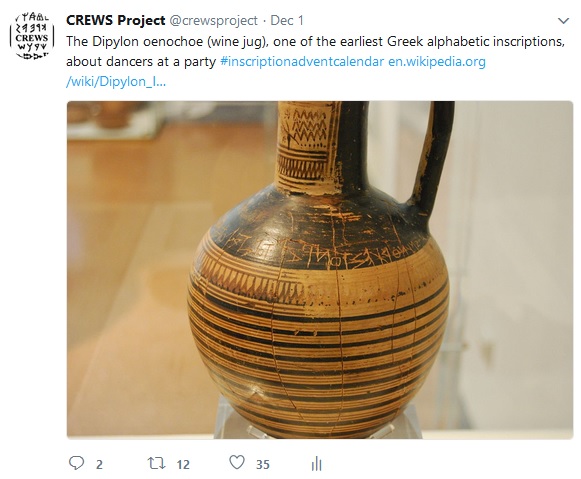ἐγὼ τὸ ἄλφα καὶ τὸ ὦ, ὁ πρῶτος καὶ ὁ ἔσχατος, ἡ ἀρχὴ καὶ τὸ τέλος.
‘I am the Alpha and the Omega, the first and the last, the beginning and the end.’
These words may look familiar – a quotation from Jesus in the very final chapter of the Bible, in the book of Revelation. Particularly striking is the use of the first and last letters of the alphabet to describe Jesus. What is going on here? This seems like an interesting question to explore in the middle of the festive period. (Readers who want to pursue the question further might be interested in reading the articles given in the references below, which I have used in the preparation of this post.)


 CREWS people have been busy with various conferences this year. In April Rob was involved in organising the conference, “A Corpus and Usage-based approach to Ancient Greek: From the Archaic Period until the Koine”, in Riga, together with colleagues from the University of Leipzig University and the University of Latvia (see
CREWS people have been busy with various conferences this year. In April Rob was involved in organising the conference, “A Corpus and Usage-based approach to Ancient Greek: From the Archaic Period until the Koine”, in Riga, together with colleagues from the University of Leipzig University and the University of Latvia (see  Our next object, from
Our next object, from 





